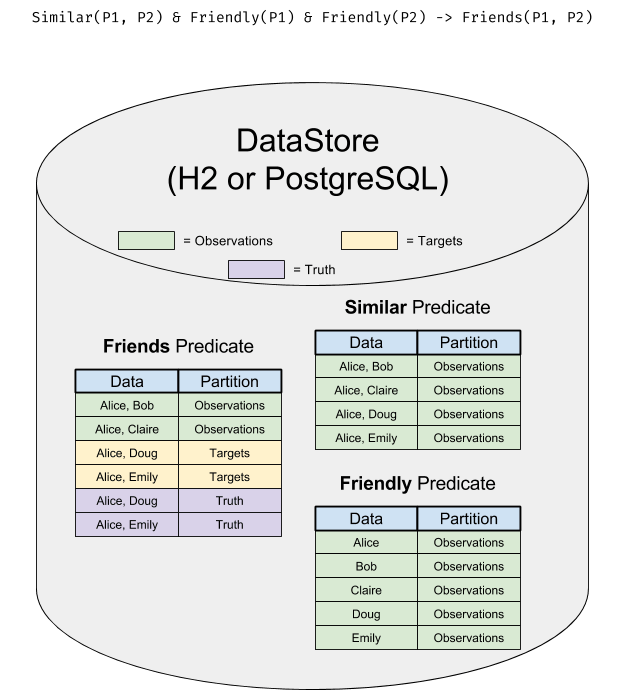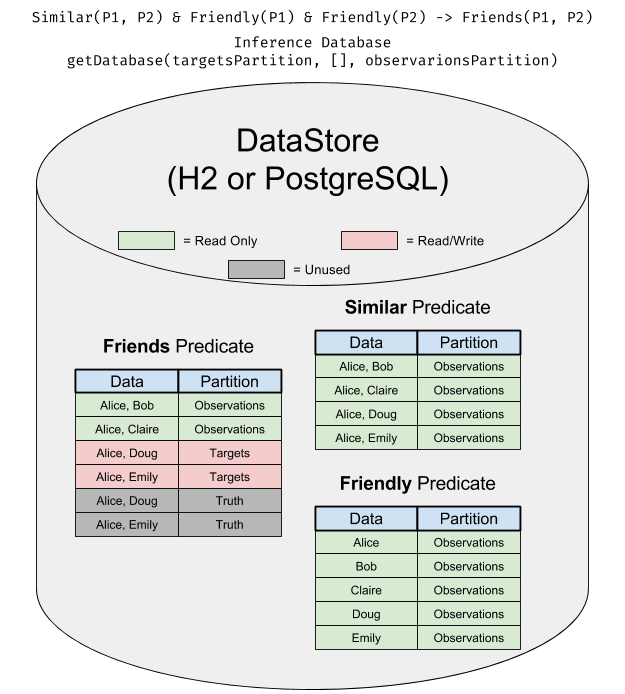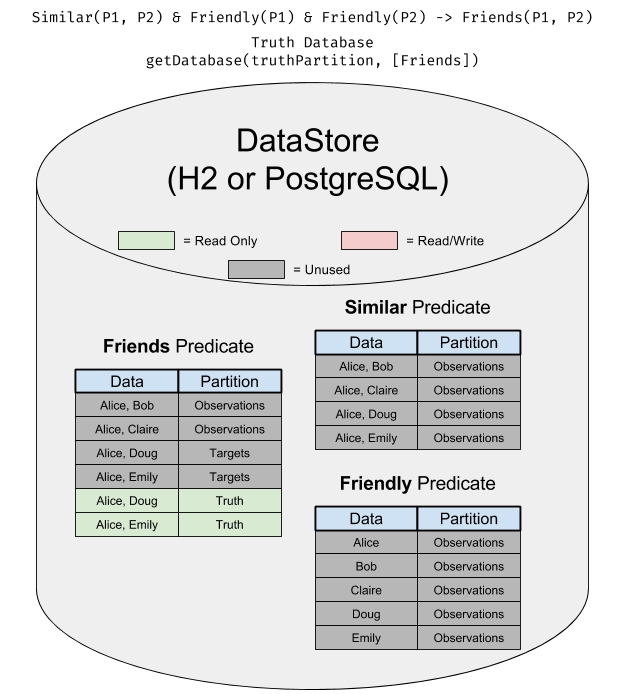Data Storage in PSL
There are several levels of data abstraction in PSL to help manage and isolate data:
DataStore
The DataStore represents the physical place that all the data is stored. It matches one-to-one with an actual RDBMS database instance (either H2 or PostgreSQL).
All data is stored in tables organized by predicate (one predicate to a table).
Databases are created using their constructor.
In this diagram, you can see how the data resides in the DataStore:

Database
The Database is like a view onto a DataStore where subsets of the data are assigned to be read/write, read-only, or inaccessible. This makes it easy to do things like have observations and truth in the same database without worrying about one leaking into the other.
To get a database, you call DataStore.getDatabase() on a DataStore.
getDatabase() takes two required arguments and one variadic argument:
- The write partition (this partition will be marked as read/write).
- A set of predicates to be considered “closed”.
- Any number of read partition (these partitions will all be marked as read-only).
In this diagram, you can see what a Database set up for inference looks like:

In this diagram, you can see what a Database set up as a truth for weight learning or evaluation looks like:

Partition
A Partition is the most fine-grained collection of data in PSL. Every ground atom (piece of data) belongs to exactly one partition. Within a partition, all data must be unique (an exception will be thrown during data loading if this is broken).
In most cases, you will want two or three partitions for inference:
observations- for observed data that has a fixed value.targets- for the data you want to infer.truth- optional truth values for that targets that you can use for evaluation.